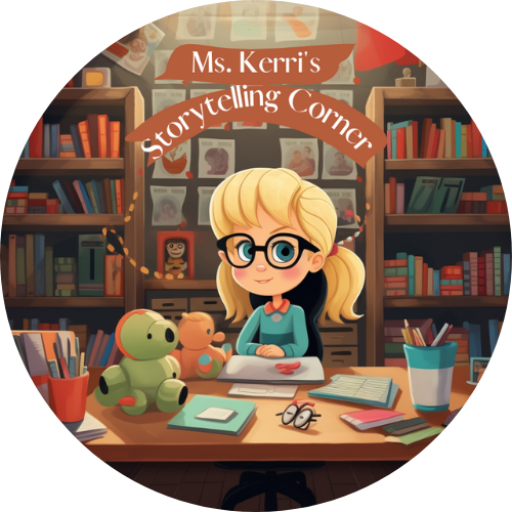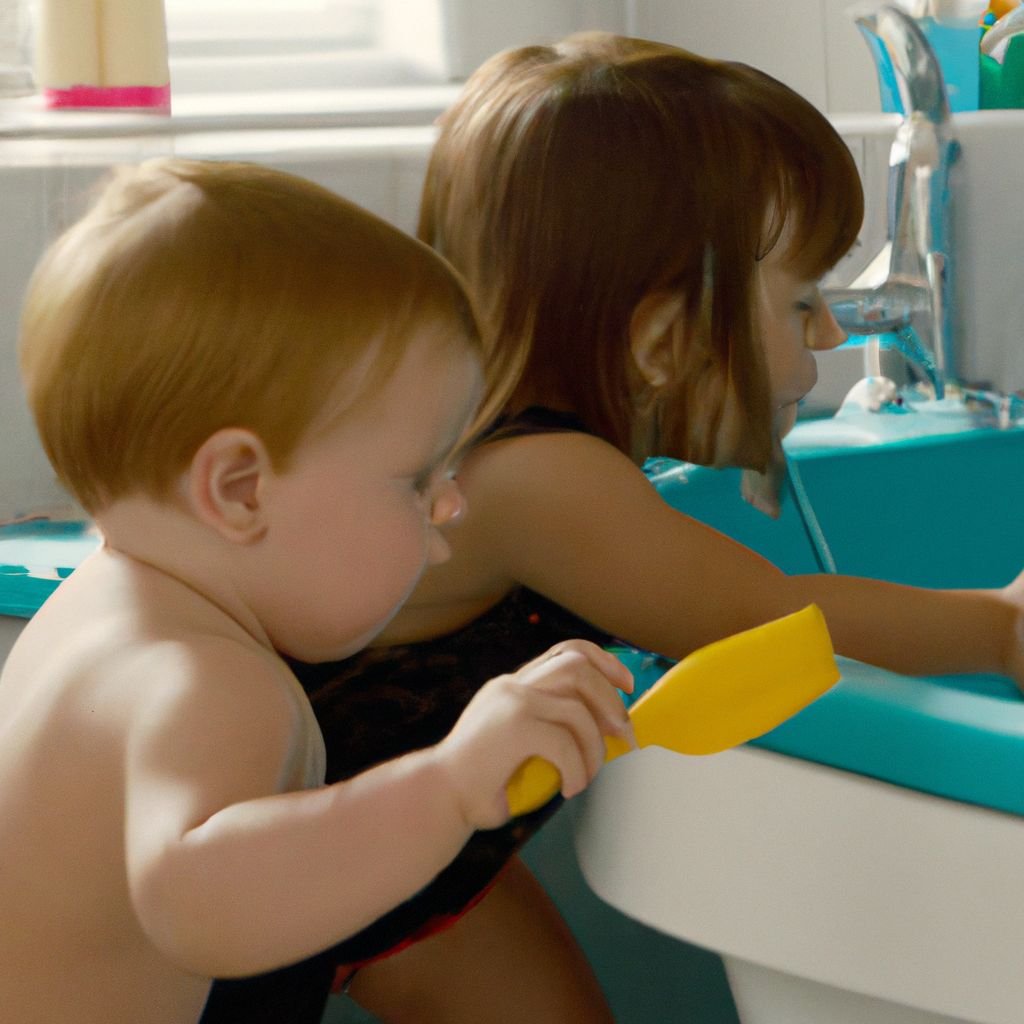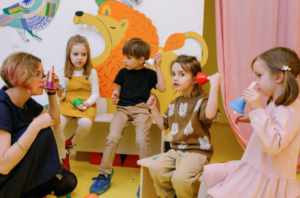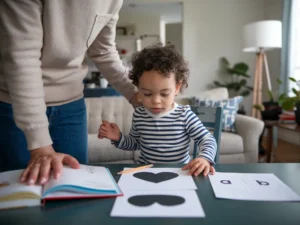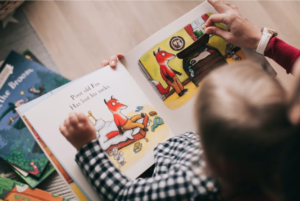Bathtime can be more than just a time to get clean. It can also be a valuable learning opportunity for young children. By incorporating simple activities into bathtime, you can engage your child’s senses, create a positive learning environment, and promote learning in various subjects such as math, science, language, literacy, and fine motor skills. Here are some key takeaways from turning bathtime into a learning experience:
Key Takeaways
- Bathtime can be transformed into a fun and educational experience for children.
- Engaging your child’s senses during bathtime can enhance their learning.
- Creating a positive learning environment in the bathtub can foster curiosity and creativity.
- Sensory activities like floating and sinking, water color mixing, and sensory bottles can stimulate your child’s senses.
- Math and science activities such as counting and sorting, measuring and pouring, and bubble science can introduce basic concepts in an interactive way.
Why Turn Bathtime into a Learning Experience?

Benefits of Learning in the Bathtub
Bathtime is not just about getting clean, it can also be a valuable learning opportunity for your child. Engaging your child in educational activities during bathtime can have numerous benefits for their development. By incorporating learning into their daily routine, you can make bath time a fun and interactive experience that stimulates their senses and promotes learning.
Engaging Your Child’s Senses
Engaging your child’s senses during bathtime is a great way to enhance their learning experience. By incorporating different sensory activities, you can stimulate their senses and promote their cognitive development. Water play is a fantastic sensory activity that allows children to explore different textures, temperatures, and water movements. They can splash, pour, and feel the water with their hands, which helps develop their fine motor skills and hand-eye coordination. Encourage your child to use their senses to observe and interact with the water in various ways.
Creating a Positive Learning Environment
Creating a positive learning environment is essential for maximizing your child’s learning potential during bathtime. By fostering a supportive and encouraging atmosphere, you can help your child feel comfortable and motivated to explore and learn. Here are some tips to create a positive learning environment:
Sensory Activities for Bathtime Learning

Floating and Sinking
One of the most fascinating concepts to explore during bathtime is the idea of floating and sinking. This simple activity not only engages your child’s senses but also introduces them to basic principles of physics. By experimenting with different objects in the water, your child can learn about buoyancy and density. Encourage them to predict which objects will float and which will sink, and then observe the results together. This hands-on experience will help them develop critical thinking skills and a deeper understanding of the world around them.
Water Color Mixing
Water color mixing is a fun and educational activity that can be done during bathtime. It allows children to explore colors, experiment with different combinations, and learn about color theory. Mixing colors in water is a great way to introduce young children to the concept of color blending and how primary colors can be combined to create secondary colors. It also helps develop their fine motor skills as they use brushes or their hands to mix the colors in the water. This activity can be done using non-toxic watercolor paints or even food coloring.
Sensory Bottles
Sensory bottles are a fantastic way to engage your child’s senses during bathtime. These bottles are filled with different materials and liquids, creating a mesmerizing visual and tactile experience. Shake the bottle and watch as the objects inside float and swirl, stimulating your child’s curiosity and imagination.
You can easily make your own sensory bottles using simple materials found around the house. Fill a plastic bottle with water, add a few drops of food coloring or glitter for visual interest, and then seal the bottle tightly. Encourage your child to observe the movement of the objects inside the bottle and describe what they see. This activity promotes language development and encourages your child to use descriptive words.
To make the sensory bottles even more engaging, you can add different objects such as small toys, beads, or even sequins. Each bottle can have a different theme, such as ocean, space, or nature. This allows your child to explore different concepts and themes while having fun in the bathtub.
Tip: Use clear plastic bottles for better visibility of the objects inside. Make sure the bottles are sealed tightly to prevent any leaks during bathtime.
 https://direct.me/mskerriscorner
https://direct.me/mskerriscorner
Foam Shapes and Letters
Foam shapes and letters are a fantastic way to introduce your child to the world of shapes and letters while they enjoy their bath. Shapes are all around us, and by incorporating them into bathtime, you can help your child develop their spatial awareness and recognition skills. Letters are the building blocks of language, and by playing with foam letters in the tub, your child can start to recognize and become familiar with different letters of the alphabet.
To make the most of this activity, consider the following:
- Engage your child in conversation while they play with the foam shapes and letters. Ask them questions like, ‘Can you find the triangle?’ or ‘What letter does your name start with?’. This not only reinforces their learning but also encourages language development.
- Encourage creativity and imagination by challenging your child to create different objects or words using the foam shapes and letters. This allows them to explore their creativity while practicing their fine motor skills.
- Extend the learning by introducing new concepts and vocabulary. For example, you can talk about the colors of the foam shapes or discuss words that start with the letter they are playing with.
Remember, bathtime is not just for getting clean; it’s also an opportunity for fun and learning. So grab some foam shapes and letters and dive into the world of shapes and letters with your child!
Math and Science Activities for Bathtime Learning

Counting and Sorting
Dive into numbers with a splash! Transform those soapy suds into a hub of numerical fun with counting and sorting games. Start simple: how many rubber ducks are bobbing along? How many blue vs. yellow toys can you spot? It’s a playful way to introduce basic math concepts.
Gather a variety of waterproof toys and encourage your little one to group them by type, color, or size. It’s a hands-on approach to categorize and compare, fostering early analytical skills. Here’s a quick guide to get you started:
- Step 1: Collect a mix of bath toys.
- Step 2: Ask your child to sort them into different groups.
- Step 3: Count each group together.
Remember, there’s no right or wrong way to sort. It’s all about exploring and discovering patterns.
As they play, they’re not just splashing around—they’re building a foundation for problem-solving and critical thinking. Who knew bathtime could be so brainy?
Measuring and Pouring
Measuring and pouring activities in the bathtub are not only fun but also provide valuable opportunities for your child to develop their math and science skills. By engaging in these activities, they can learn about concepts such as volume, capacity, and measurement. Measuring the amount of water in different containers and pouring it from one container to another helps them understand the concept of quantity and how it can change when objects are transferred. It also enhances their hand-eye coordination and fine motor skills.
Bubble Science
Bubble science is a fun and educational activity that can be incorporated into bathtime learning. Bubbles are fascinating to children and provide a great opportunity to explore concepts of physics and chemistry. Here are some simple bubble science experiments you can try with your child:
- Bubble Shapes: Use different shaped bubble wands to create bubbles in various shapes, such as squares, triangles, and even cubes. Encourage your child to observe and describe the different shapes they create.
- Bubble Blowing Techniques: Experiment with different techniques for blowing bubbles, such as blowing gently or blowing harder. Discuss with your child how the force of the breath affects the size and shape of the bubbles.
- Bubble Colors: Add a few drops of food coloring to the bubble solution to create colored bubbles. Observe how the colors mix and blend as the bubbles float in the water.
- Bubble Popping: Explore the science of bubble popping by observing how bubbles burst when they come into contact with different surfaces, such as hands, toys, or the side of the bathtub.
Remember to always supervise your child during bubble science experiments and ensure they are using safe and non-toxic bubble solutions.
Sink or Float Experiment
In this fun and educational activity, you can explore the concept of buoyancy with your child. Fill the bathtub with water and gather a variety of objects from around the house. Encourage your child to predict whether each object will sink or float before testing it out. Bold the word ‘buoyancy’ to emphasize the key concept.
To make it more interactive, create a Markdown table to record your child’s predictions and the actual results. This will help them understand the difference between their expectations and the reality. It’s a great opportunity to discuss why some objects float while others sink, and introduce the idea of density.
Here’s an example of how you can structure the table:
| Object | Prediction | Result |
|---|---|---|
| Toy car | Sink | Float |
| Rubber duck | Float | Float |
| Wooden block | Sink | Sink |
Remember, the goal is to engage your child’s curiosity and encourage them to think critically. Ask open-ended questions like ‘Why do you think the rubber duck floats?’ or ‘What do you notice about the objects that sink?’ This will promote their problem-solving skills and scientific thinking.
Tip: Keep the objects small and safe for the bathtub, and always supervise your child during this experiment. Safety first!
Language and Literacy Activities for Bathtime Learning

Water Word Hunt
One fun and educational activity to try during bathtime is a Water Word Hunt. This activity helps to develop your child’s language and literacy skills while making bathtime more engaging and interactive.
To play the Water Word Hunt, you can create a list of words related to water, such as ‘splash’, ‘float’, ‘bubble’, and ‘swim’. Write these words on waterproof cards or use bath crayons to write them directly on the bathtub walls. Then, encourage your child to search for the words while they are in the bath.
This activity not only helps your child practice letter recognition, but it also introduces them to new vocabulary words. As they find each word, you can discuss its meaning and use it in a sentence. This interactive learning experience makes bathtime a fun and educational time for your child.
Here are some tips to make the Water Word Hunt even more enjoyable:
- Use different colored bath crayons to write the words for added visual appeal.
- Encourage your child to say the words out loud as they find them.
- Play a game of ‘I Spy’ with the words, giving clues to help your child locate them.
Try the Water Word Hunt during your next bathtime session and watch as your child’s language and literacy skills flourish!
Storytelling with Bath Toys
Storytelling is a powerful tool for engaging your child’s imagination and language skills. By incorporating bath toys into the storytelling experience, you can create a fun and interactive learning activity. Bath toys such as rubber ducks, boats, and sea creatures can serve as characters in the story, while the bathtub itself becomes the setting. Encourage your child to use their creativity and storytelling abilities to bring the characters to life. This activity not only enhances language development but also promotes cognitive skills such as problem-solving and critical thinking.
 https://direct.me/mskerriscorner
https://direct.me/mskerriscorner
Letter Recognition
Letter recognition is an essential skill for early literacy development. It lays the foundation for reading and writing, allowing children to identify and differentiate between letters. By engaging in letter recognition activities during bathtime, you can make learning fun and interactive. Here are some ideas to incorporate letter recognition into your child’s bathtime routine:
- Alphabet Soup: Fill the bathtub with foam letters and encourage your child to find specific letters or spell simple words. This activity promotes letter recognition and letter-sound correspondence.
- Letter Fishing: Use a fishing net or a small sieve to scoop up foam letters floating in the water. Ask your child to identify the letters they catch, reinforcing their letter recognition skills.
- Water Writing: Give your child a waterproof marker or bath crayons and let them practice writing letters on the bathtub walls. This hands-on activity helps reinforce letter formation and recognition.
- Letter Hunt: Hide foam letters around the bathtub and challenge your child to find them. As they discover each letter, ask them to name it and identify its sound.
These activities not only enhance letter recognition but also promote fine motor skills, hand-eye coordination, and language development.
Rhyme Time
Rhyme Time is a fun and interactive activity that can help develop your child’s language and literacy skills. By incorporating rhymes and songs into bathtime, you can create a playful learning environment that engages your child’s imagination and creativity. Singing nursery rhymes and reciting simple poems not only introduces your child to the rhythm and sounds of language, but also helps them develop their vocabulary and phonemic awareness. Rhyme Time is a great opportunity to bond with your child and make bathtime a memorable and educational experience.
Fine Motor Skills Activities for Bathtime Learning

Water Play with Scoops and Cups
Water play with scoops and cups is a fun and interactive way to develop fine motor skills in young children. By scooping and pouring water, children strengthen their hand muscles and improve their coordination. Scooping and pouring can also help children understand concepts such as volume and capacity. Encourage your child to explore different sizes and shapes of cups and experiment with filling them to different levels. This activity can be done in the bathtub or in a water table.
Pouring and Transferring
Pouring and transferring activities in the bathtub are not only fun but also great for developing fine motor skills. Pouring water from one container to another helps children practice their hand-eye coordination and grip strength. It also teaches them about cause and effect as they see the water move from one place to another. Transferring objects like bath toys or foam shapes using a scoop or a cup requires precision and control, which helps improve their dexterity. These activities also encourage problem-solving skills as children figure out how to pour or transfer without spilling. So, grab some containers and let your child explore the world of pouring and transferring in the bathtub!
Stacking and Balancing
Stacking and balancing activities in the bathtub can help develop your child’s fine motor skills and hand-eye coordination. Encourage your child to stack foam shapes or bath toys to create tall towers or balanced structures. This activity not only enhances their motor skills but also promotes problem-solving and spatial awareness.
To make it more challenging, you can introduce different sizes and shapes of objects for stacking. This will require your child to think strategically and experiment with balance. Remember to supervise your child closely to ensure their safety in the water.
Here are some tips for successful stacking and balancing activities:
- Start with larger, more stable objects and gradually progress to smaller, less stable ones.
- Encourage your child to try different stacking techniques, such as building a pyramid or a bridge.
- Use bath toys with suction cups that can stick to the sides of the bathtub for added stability.
By incorporating stacking and balancing activities into bathtime, you can make learning fun and engaging for your child while promoting their fine motor skills and problem-solving abilities.
Bath Time Puzzles
Bath time puzzles are a fantastic way to engage your child’s problem-solving skills while they splash and play in the tub. These puzzles come in a variety of shapes and sizes, from simple foam puzzles to more complex floating puzzles. By introducing puzzles during bath time, you can encourage your child to think critically and develop their cognitive abilities. As they fit the pieces together, they will also improve their hand-eye coordination and fine motor skills. It’s a win-win situation!
In the article section of my website, I have a post titled ‘Fine Motor Skills Activities for Bathtime Learning’. This article provides a variety of engaging activities that can help children develop their fine motor skills while enjoying bath time. From pouring and scooping water to using bath toys to practice hand-eye coordination, these activities are not only fun but also educational. If you’re looking for ways to make bath time a valuable learning experience for your child, be sure to check out this article on my website, ‘Home – Ms. Kerri’s Story Telling Corner’.
Conclusion
In conclusion, bathtime can be more than just a routine activity. By incorporating simple and fun learning activities, you can turn bathtime into an interactive and educational experience for your child. From exploring floating and sinking objects to practicing letter recognition with foam letters, there are endless possibilities to engage your child’s curiosity and promote their learning. So, the next time you prepare for bathtime, remember to bring in some educational elements and watch your child’s excitement and knowledge grow!
 https://direct.me/mskerriscorner
https://direct.me/mskerriscorner
Frequently Asked Questions
How can I turn bathtime into a learning experience?
You can turn bathtime into a learning experience by incorporating educational activities and games that engage your child’s senses and promote learning in a fun and interactive way. This can include activities such as counting, sorting, storytelling, and sensory experiments.
What are the benefits of learning in the bathtub?
Learning in the bathtub offers several benefits, including stimulating your child’s senses, promoting cognitive development, enhancing fine motor skills, and creating a positive learning environment. It also provides a relaxing and enjoyable experience for both children and parents.
How can I engage my child’s senses during bathtime?
You can engage your child’s senses during bathtime by using sensory materials such as water, foam, and bath toys. Encourage them to explore different textures, colors, and shapes. You can also incorporate scented bath products or play calming music to create a multi-sensory experience.
What are some math and science activities for bathtime learning?
Math and science activities for bathtime learning include counting and sorting objects, measuring and pouring water, conducting bubble science experiments, and exploring the concept of sink or float. These activities help develop mathematical and scientific thinking skills.
How can I promote language and literacy skills during bathtime?
You can promote language and literacy skills during bathtime by engaging in activities such as water word hunts, storytelling with bath toys, letter recognition games, and rhyming games. Encourage your child to talk, listen, and interact with language in a playful and relaxed setting.
What are some fine motor skills activities for bathtime learning?
Fine motor skills activities for bathtime learning include water play with scoops and cups, pouring and transferring water between containers, stacking and balancing bath toys, and solving bath time puzzles. These activities help improve hand-eye coordination and dexterity.

Ms. Kerri’s Corner provides a exciting virtual space for preschool learning. Through a variety of engaging activities, she exposes young minds to early math, literacy, science and social-emotional skills in a developmentally appropriate way. Centers for blocks, art, books and music allow children to explore hands-on learning at their own pace. Guided lessons subtly introduce number sense, letter sounds and narrative thinking. Careful observation gives insight into each child’s progress across domains. Viewers are also invited to participate, reinforcing that their ideas are valued. By making learning fun yet purposeful, Ms. Kerri lays the groundwork for future academic success while fostering creativity and imagination. Her program offers preschoolers valuable screen-based learning experiences.
